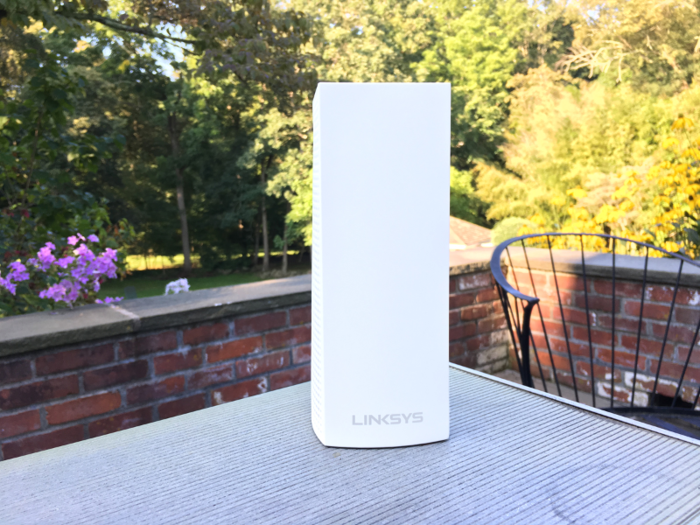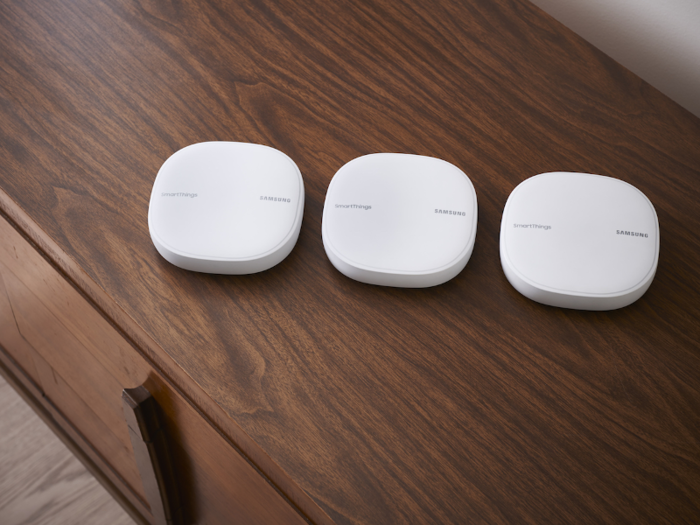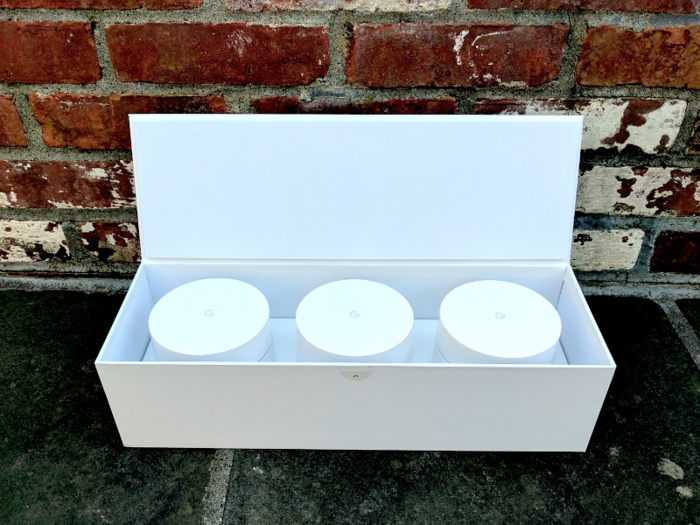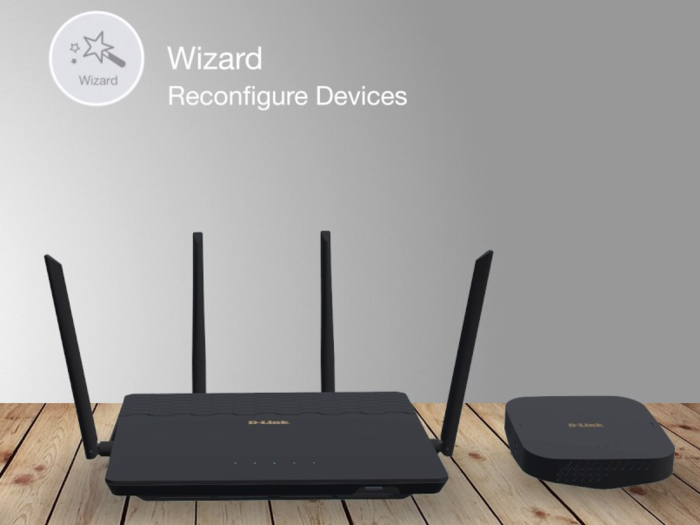- Home
- slideshows
- miscellaneous
- The best mesh Wi-Fi systems you can buy
The best mesh Wi-Fi systems you can buy
The best mesh Wi-Fi system overall

The best mesh Wi-Fi system for Apple fans

Linksys has been a rock-solid choice for routers and Internet connectivity since its inception in 1998, so it should come as no surprise that Linksys' Velop mesh system is among the best you can buy.
Unlike some of the more compact mesh Wi-Fi system designs, each Velop is shaped like a tower and measures nearly eight inches tall and three inches wide. Shiny and white, they are not exactly inconspicuous, but you can easily hide them behind plants or other décor.
A tri-band dual stream design acts as an AC2200 router, range extender access point, and bridge. Each node combines Wi-Fi radios and mesh Wi-Fi to operate in both technologies and supports Multi-User Multiple Input, Multiple Output (MU-MIMI) data streaming for quicker speeds.
We used the two-pack, which should cover up to 4,000 square feet, and it was much more than we needed. For larger homes, we suggest the three-pack.
The Linksys app walks you through set-up, which is as simple as plugging one node into your router, the others into the wall, and tapping a button. The app also includes free parental controls and an Ookla Speedtest service to make sure you’re getting what you paid for. It also comes with automatic firmware updates, an optional guest network, and Alexa capability.
Pros: Speedy Wi-Fi free parental controls, can cover spaces up to 6,000 sq ft
Cons: Settings not customizable, pricey, no USB ports for extra connectivity
Buy the Linksys Velop mesh Wi-Fi system on Amazon for $169.99 - $399.97 (price varies by number of towers)The best mesh Wi-Fi system for a connected home

If you’re looking for a mesh Wi-Fi system that will cover every square inch of your home with high-speed wireless internet, and act as a main hub for all your smart home devices, the Samsung SmartThings Wi-Fi system is a fantastic solution.
The model I tested has an even stronger Wi-Fi connection than the original Samsung Connect Home, thanks to the partnership with a network specialist called Plume. The system comes with three hubs, and each hub can cover up to 1,500 square feet. If you’re trying to cover an even larger area than the 4,500-square foot coverage this system provides, up to a whopping 32 hubs can be added for additional coverage.
We currently live in a 2,200 square-foot house, which left plenty of “dead-zone” areas in our home where the Wi-Fi was almost non-existent. However, this all changed once we set up the SmartThings Wi-Fi system. Two smart TVs that we had been trying to set up in our upstairs connected to the internet almost instantly, and areas like the kitchen where I often tried to set up my laptop to write now had full-strength Wi-Fi to work with.
In addition, we could move toward automating our home since the system also acts as a hub for smart home devices so you can control everything directly from the SmartThings app, or use the compatible Google Assistant or Amazon Alexa for voice control.
In addition to Samsung SmartThings home devices, this system also supports other Wi-Fi, Z-Wave, Zigbee, and Bluetooth devices, so you can wirelessly connect lights, smart thermostats, cameras, smart plugs, and more.
The SmartThings Wi-Fi system was simple to set up, and it took us about 10 minutes total to set up all three hubs in the different areas of our home. One hub got connected directly to our modem, acting as a router and setting up a “home base” for the additional two hubs to connect to.
An LED light on each hub indicates when the hub is ready to connect, flashing red and green, and then turns to solid green once the hub is connected. The SmartThings app is used to easily guide you through the set-up process.
However, to get full access to the internet settings, you’ll have to download the Plume app as well, which allows you to check on the health of your internet, and control specific settings like who has access to your internet connection, though the parental control capabilities are limited.
While it would have been ideal to have everything in one app, both apps are user friendly and easy to navigate. I especially like how the SmartThings app allows you to create “scenes” so you can keep all your smart home devices well-organized. For example, each room in your home could be considered one scene, and each scene contains all the devices in that room that you would want to control.
There is also a helpful Discover Section to help you learn how to get the most out of your system — perfect for first-timers like me that are just starting to set up their smart home.
As with most products designed by Samsung, aesthetic wasn’t forgotten here. The hubs are small enough that they can be easily hidden, and even if left out in plain view, the sleek, puck-like design keeps them subtle.
Amazon reviewers love that the system provides effective Wi-Fi coverage for multi-level homes, and have found it to be the “ultimate companion” for their smart homes, thanks to the ability to keep everything connected and organized in one place. — Kylie Joyner
Pros: Easy to set up, provides great mesh Wi-Fi coverage over a large area, allows you to keep your smart home organized, compatible with hundreds of smart home devices
Cons: Requires the use of two different apps for full capabilities, limited parental controls, on the expensive side
Buy the Samsung SmartThings Wi-Fi System on Amazon for $118.97 (1-pack) or $247.14 (3-pack) Buy the Samsung SmartThings Wi-Fi System 3-pack on Samsung for $279.99The best mesh Wi-Fi system for reliability

The Google WiFi system is shiny, white and small enough to ignore. Its round, nearly 3-inch tall body is bisected by a thin LED strip that glows different colors depending on its status. Each one acts as dual-band system and comes out to AX1200 Wi-Fi.
As with most of these systems, you download the Google WiFi app for set up and maintenance, but because this is Google, the instructions and interface are even simpler and easier to follow. Unlike the others, however, if you don’t already have a Google account, you’ll have to get one to sign in and use the app and the system. That way, you can check on your Wi-Fi from anywhere in the world.
You also get free parental controls, automatic software updates, a guest network, and integration with any Google products in your home, which is a real advantage if you use Android and other products in the Google ecosystem. And we won’t lie, having 24/7 customer service is always a plus.
Each Google WiFi module covers up to 1,500 sq ft and we used the three-pack, though you can add-on with single Wi-Fi points as well.
Pros: Sleek design, simple to set-up and use, connect with any Google products in your home ecosystem
Cons: Not as fast as other systems, doesn’t work as well is larger spaces, no USB ports
Buy the Google WiFi on Amazon for $99 (1-pack) or $249 (3-pack)The best mesh Wi-Fi system for big homes

Unlike the other mesh systems in this guide, D-link went about creating whole-home Wi-Fi a little differently. Instead of using a series of small, aesthetically pleasing satellites like its competitors, the Covr AC3900 Kit is comprised of a Wi-Fi router and range extender.
The actual router is larger and boasts four adjustable antennas, so you’re not going to want to display it out in the open. The extender, however, is a black plastic square that can be more easily camouflaged.
D-Link’s philosophy is to let the high-powered, dual-band router create what it calls a PowrZone for your home. It blasts out a wide net of Wi-Fi and lets the extender pick up the slack. It also means you’ll have to place the router in the center of your home, allowing the extender to cover the lackluster edges. It supports MU-MIMO streaming, and the mesh Wi-Fi allows for a single name for both router and extender.
The set-up is simple, but again, it deviates from the other systems by eschewing a mandatory app, though you can download a free one if you’d like help with installation. Or, if you’d prefer more control, you can set-up a guest network, parental controls, and firewalls or manage other settings via the D-Link web console.
We used the kit, which will cover up to 6000 sq ft, though we also found that in our smaller space of just one floor, this was an extremely capable system with less hardware to plug in.
Pros: Web-based settings for more intricate management controls, covers a huge amount of space, also works well for smaller homes, less hardware to install
Cons: Larger, unattractive router design, mobile app limited for settings and help, web console can be wonky
Buy the D-Link Covr AC3900 Kit on Amazon for $174.73 (originally $199.99)Popular Right Now
Popular Keywords
Advertisement